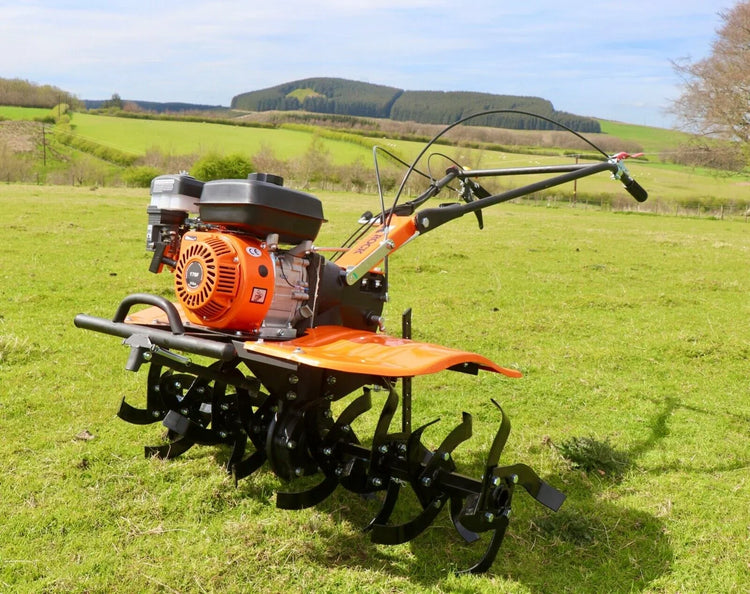Rotavators, also known as rotary tillers, are powerful tools designed to break up soil, making it ideal for gardening, farming, and landscaping projects. The rotary blades dig deep into the soil, reaching roots and compacted layers that are hard to manage with a spade. They can mix in compost, aerate the ground, and prepare seedbeds, turning hard-packed ground into fertile, workable soil.
Whether you’re a gardening enthusiast or a professional landscaper, mastering the use of a rotavator can significantly enhance your projects. Read on to learn more about how to use rotavators for effective soil preparation.
Preparing the Area
Before starting, inspect the plot to remove any obstacles like stones, branches, or debris. This step protects the rotavator’s blades from damage. If the soil is extremely hard, watering it lightly the night before can make the process smoother.
Set Up the Rotavator
Adjust the blade depth and speed to suit your project’s requirements. For softer soil that’s already been worked on, a shallow setting might be sufficient to aerate and mix in compost. However, when breaking up new or compacted ground, set the blades deeper to ensure thorough tilling.
Pay attention to the soil type as this can influence your settings; sandy soil may require less depth than heavy clay, which often needs deeper penetration for effective results. Ensure the machine is on a level surface before starting to prevent any accidental damage.
Start with a Low Gear
Always begin at a slower speed, particularly if you are inexperienced or working with uneven terrain. Lower speeds give you better control and allow you to assess how the machine interacts with the soil. If the rotavator starts to skid or fails to dig in properly, adjust your pace or the blade settings to ensure optimal performance.
Tackle the Area in Rows
Work systematically to avoid missing any spots. Move the rotavator in straight lines, slightly overlapping each pass to ensure even soil preparation. This technique is especially useful for larger plots or garden beds, as it creates a consistent texture across the entire area. On slopes, work horizontally rather than vertically to maintain control and prevent uneven soil movement.
Repeat as Needed
For particularly hard or rocky soil, multiple passes may be required. Begin with a shallow setting on the first pass to loosen the topsoil, then increase the depth on subsequent passes to reach compacted layers. This step-by-step approach reduces strain on the machine and ensures more effective tilling. If necessary, break the area into smaller sections to make the task more manageable.
Choosing the Right Equipment
For larger-scale projects or additional landscaping needs, equipment like backhoes and diggers may be necessary. These machines are perfect for heavy-duty jobs such as trenching, excavating, or moving large quantities of soil.
At Rock Machinery, we’re a UK-based garden machinery supplier, who offer a comprehensive range of high-quality equipment, including rotavators, backhoes, and diggers. Whether it's home gardening or professional landscaping, our robust and versatile equipment ensures you have the right tools for any task.
Explore our range of rotavators, backhoes and diggers online or get in touch for guidance finding the perfect solution for your project.

